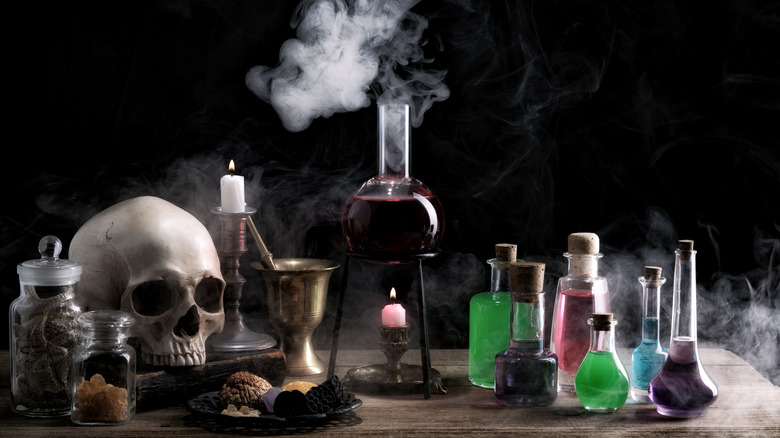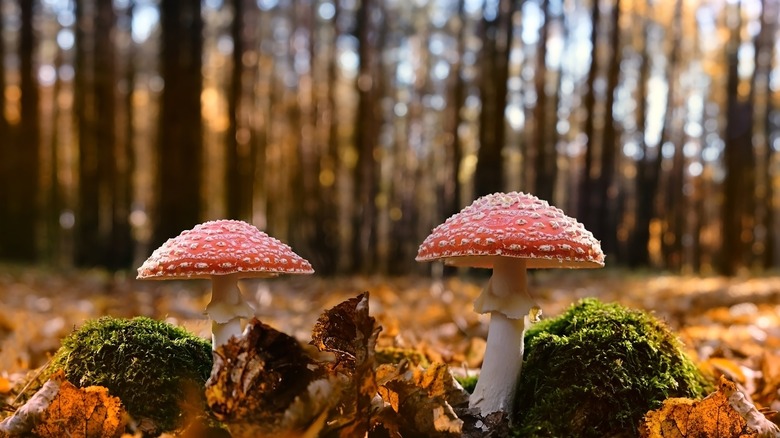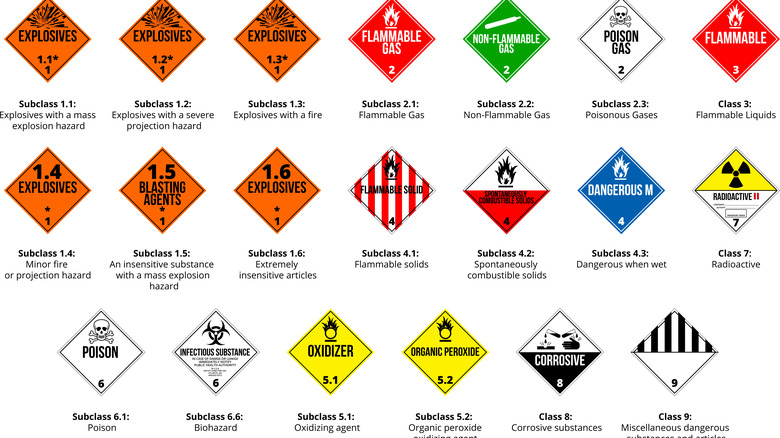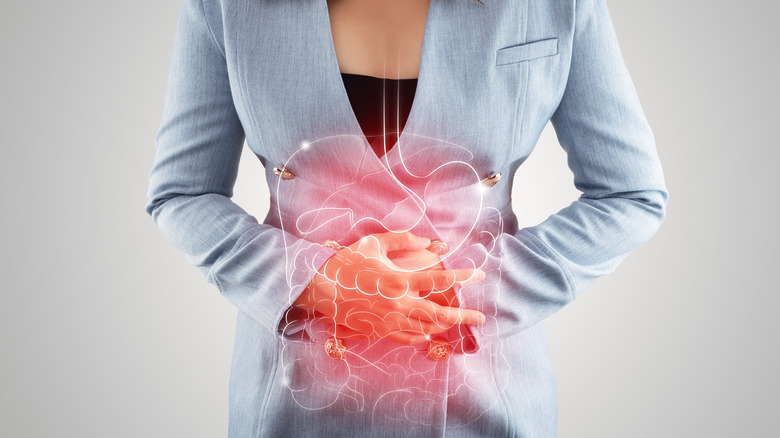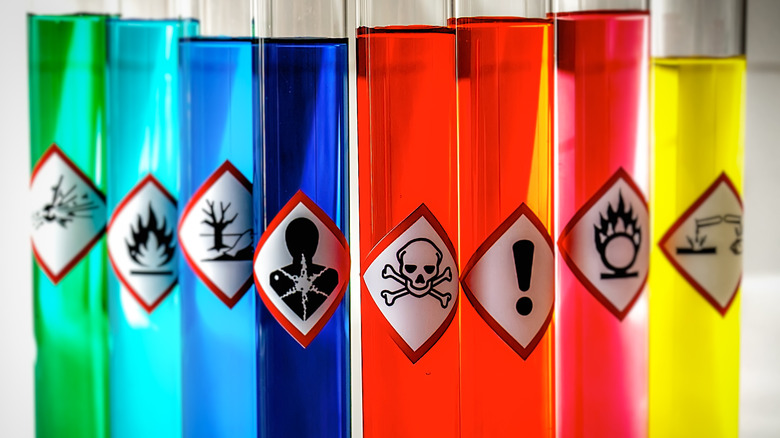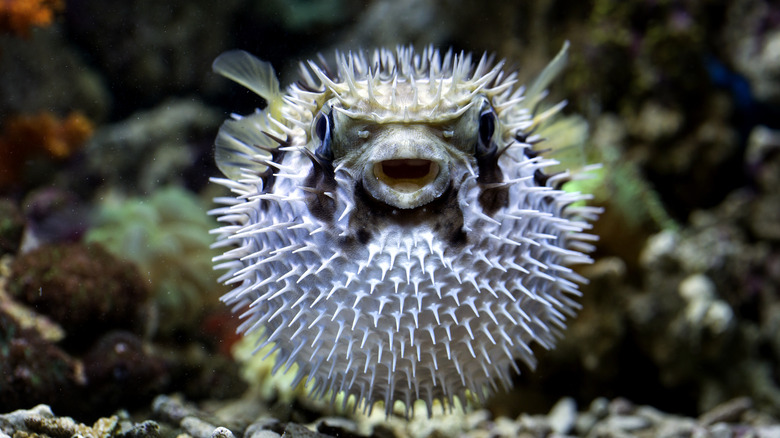The Science Behind Why Poisons Are Deadly
Fairy tale apples plucked from fantastical orchards, emerald green dresses from the Victorian era of Europe, the fall of Socrates and Cleopatra, Romeo and Juliet's dramatic conclusion ... What do all of these seemingly unconnected things have in common? If your guess was poison, then you've hit the mark.
Like it or not, poison has played a pivotal role in human history, and its importance today remains of equal measure. According to Archives of Toxicology, poison left its skull-crossed mark on just about everything that defines our world, from politics and literature to accidental deaths, from modern medicine to ancient wars. For the emperor or prisoner, poison is a death sentence (per the Journal of the Royal Society of Medicine). For the cancer patient, it is a potential cure (via Nature). For the sleeping beauties of the world, it is a curse in a bottle beaconing sleep.
Poison is what makes the mad scientist's vial so vile. Poison can inconspicuously crumble an empire. What makes these toxic toxins tick? What's the science behind why poisons are deadly?
What makes a substance poison?
According to Archives of Toxicology, toxic substances date way back to the very beginning of humankind. They are one of the oldest murder weapons of choice. But understanding these substances on a chemical and molecular level takes a great deal of scientific prowess. For example, of the known 70-80 species of mushrooms, only a handful are potentially deadly if ingested (via Britannica). The rest are a viable form of sustenance.
Similar things are true of flowers, which range from pleasant, edible daffodils to the deadly nightshade, a plant that most certainly lives up to its name (per Slate). Britannica reports that the world is rife with substances that could potentially be harmful if consumed in large doses — there have been people who died from drinking too much water (via Medical News Today). Something is only considered a poison if a small quantity of the substance can cause severe illness or death when it's consumed.
The level of toxicity is what makes a poison deadly
By definition, a substance must cause harm to be considered a poison, but it's important to note that not all poisons lead to death (per Science Learning Hub). Poisons are judged by their level of toxicity, which is defined by the California Department of Public Health as "the ability of a substance to cause harmful health effects."
Toxicity is measured based on three distinct components: chemical state, potential level of human absorption, and the body's overall ability to defend itself against the toxin. Using these factors for consideration, poisons are ranked on the LD50 scale of poisonousness to determine the amount that would prove fatal to 50% of a test population, according to ScienceAlert. If all of these factors rank high on the charts, the poison can be classified as deadly.
Wired reports that botulinum, the chemical used to give some of the most famous celebs their age-defying contours (you might know it as botox or fillers), is likely the most lethal toxin of all time.
Attacking the system from within
A poison is a silent intruder violating your body from within. The only way it can do this is by entering the system. According to Chemistry for Liberal Studies, poisons are first introduced to the body through four pathways: injection, inhalation, dermal, or ingestion. This means the deadly substances are either inhaled, ingested, touched, or delivered directly to the veins.
In order to thrive in this new environment (the human host), a poison has to translocate by traveling through a system that spans the full body, like the bloodstream. The speed the toxin takes to travel from its entryway to the rest of the body depends a great deal on its pathway of intrusion. This is why hospital patients are often given intravenous drug drips, or IVs — because injection is the fastest pathway a toxin can take since it is already in the bloodstream at its inception (via ScienceDirect).
If a poisonous gas is inhaled, it will eventually make its way to the bloodstream through the alveoli, those tiny air sacks in the lungs. If a poisonous substance is touched, it will try to invade the bloodstream by traveling through the pores and subcutaneous tissues. Ingested poisons travel through the gastrointestinal tract and small intestine.
How poisons kill
As many a mad scientist or nefarious villain has shown, poisons take on many forms and kill in various (often gruesome) ways. The coveted Botox-inducing botulinum goes straight for the nervous system and causes paralysis, which leads to agonizing death (via Wired). And any "Breaking Bad" fan knows that ricin, when slipped into a packet of Stevia and ingested, can result in fatal respiratory and organ failure.
According to Chemistry for Liberal Studies, poisons are of two types: toxins and heavy metals. The former are poisons produced by natural biological function, like snake venom and tetrodotoxin. The latter are poisons produced by the five toxic heavy metals — chromium, cadmium, mercury, arsenic, and lead (via Frontiers in Pharmacology). Toxins are classified into subcategories based on how they invade the body. Neurotoxins attack the nervous system, cytotoxins interfere with cells, and hemotoxins go straight for the blood and/or organs.
We tend to think of poisonous contents as existing in the confines of laboratories or the pages of history books, but some of the most dangerous substances are stashed right in our homes, cars, and work spaces. Did you know that ingesting small amounts of windshield wiper fluid could cause you to go blind and eventually die (per Poison)? Even the tiny batteries found in greeting cards and key fobs are potentially fatal if swallowed.
The deadliest poisons are neurotoxins
Determining just how toxic or deadly a poison is can be complicated, particularly because it can change based on how the substance is introduced. Wired reports that tetrodotoxin, which is found in the organs of the tiger puffer fish that appears in an elite Japanese dish called fugu, can be one of the deadliest substances on the planet when eaten. However, ScienceAlert reports that the fishy neurotoxin that can kill a dinner guest in six hours flat is even more lethal when injected directly into somebody's veins. To make matters even more perplexing, if the dish is prepared correctly, with the lethal organs removed, it goes from a diabolical entrée to a five-star meal.
By and large, scientists concur that the deadliest poisons of all are neurotoxins, including the lethal tetrodotoxin mentioned above (via Chemistry for Liberal Studies). These fatal substances inhibit the nervous system, causing crippling effects like paralysis, seizures, and sudden death. Some of the most potent neurotoxins include mercury, which is absorbed by mucus membranes and invades the brain and lungs (per Journal of Biomedicine and Biotechnology); cyanide, which causes cardiac arrest, seizures, and eventually death; and lead, the material associated with 1.5% of annual global deaths, according to UNICEF. Other noteworthy poisons to watch out for include the panic-inducing cutaneous killer anthrax and the coma-causing fatal whiff of sarin that Wired reports is 100 times more lethal than the infamous cyanide.
